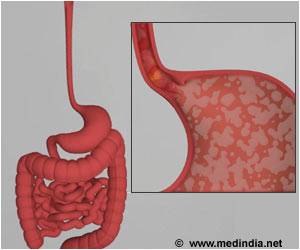As researchers get infected, the US Centers for Disease Control and Prevention (CDC) has ordered a Texan biodefense research laboratory to stop all work on select agents and toxins.
Chickens are coming home to roost? Those involved in biological weapons programs should be logically liable to infection because of some slip or other. And it seems to have happened in US and the Centers for Disease Control and Prevention (CDC) has ordered the biodefense research laboratory at Texas A&M University to stop all work on select agents and toxins.
The CDC is investigating reports of lab workers infected with the category B bio-terror agents Brucella and Coxiella burnetti.Brucella infections cause prolonged fever and a wide range of other possible manifestations, such as arthritis, hepatitis, and meningitis. Symptoms can be prolonged, but the disease is rarely fatal. In livestock, brucellosis causes infertility and abortions. As bioterrorism agents, Brucella strains are inexpensive to produce and disperse, according to an August 2005 article in the CDC journal Emerging Infectious Diseases (EID).
Coxiella burnetii causes a flulike disease in humans that is rarely fatal, according to the CDC. It is called Q fever.
'Query fever' – usually shortened to 'Q fever', was named by Dr John Derrick, who described an outbreak of a febrile illness that occurred among abattoir workers in 1935. Q fever has an incubation period of one to four weeks – in other words, it can take up to four weeks between exposure and the first symptoms. Usually it starts with a sudden high fever with muscle pain and severe headache symptoms – similar to influenza. There may be chills, sweats, cough, muscle pains and fatigue. These symptoms usually last seven to 10 days and the person recovers completely – though recovery may take longer in older people.
Some people get complications. Between five and 15 per cent of patients develop a post-Q fever chronic fatigue syndrome that can last many months.
Sometimes Q fever can cause a form of pneumonia or hepatitis. And in a small percentage of cases, about 2 per cent, it persists in a chronic form and can cause inflammation of the heart valves and/or hepatitis. This chronic form is very difficult to cure.
Advertisement
The alleged lab accidents, along with related alleged violations of federal law, were recently reported by the Sunshine Project, an Austin, Texas, nonprofit group that monitors biodefense research safety. The group used Texas freedom-of-information requests to obtain documents about the lab incidents.
Five days ago, the watchdog group reported that the exposure of three other Texas A&M workers to C burnetti, which causes Q fever, was confirmed in April 2006 but also was not reported to the CDC.
The Sunshine Project said its investigation of Texas A&M came about through its review of select-agent labs that are vying to host the federal government's planned new national biodefense facility, according to a report in the Dallas Morning News.
The laboratory is affiliated with the Foreign Animal and Zoonotic Disease Defense Center, a US Department of Homeland Security (DHS) center of excellence that focuses on the study of foot-and-mouth disease, avian influenza, and Rift Valley fever, according to the center's Web site. The center is funded by an $18 million DHS grant, according to an Associated Press report yesterday.
According to the Sunshine Project, Texas A&M notified the CDC about the Brucella infection in April 2007, a year after the worker's illness was confirmed.
Shortly after Texas A&M reported the Brucella infection, representatives from the CDC's Select Agents and Toxins Division inspected the laboratory and, in a Jun 30 memo, obtained and released by the Sunshine Project, ordered the lab to stop its work on all select agents and toxins until further notice.
Von Roebuck, a CDC spokesman, said that the agency has never issued such a broad suspension order to a lab before. He said the Jun 30 order applies to every agent the lab works with. The list of affected agents is not public information because of security concerns, Roebuck said.
In the Jun 30 letter, the CDC outlined the concerns it has about the lab, which include the adequacy of biosafety plans, security of the facility from unauthorized visitors, occupational safety protocols, authorization from the CDC to work with certain agents, and compliance with federal select agent regulations.
Roebuck said CDC officials will visit the Texas laboratory again in the next few weeks to gather more information about its procedures and protocols. "Then the agency will move forward with any recommendations to get them under compliance," he said.
In a statement sent to Texas A&M faculty and staff yesterday, the school's interim president, Eddie J. Davis, said the laboratory incidents did not pose a threat to anyone on or off campus, but conceded that the university should have reported the worker's Brucella exposure in a more timely manner.
Davis said none of the workers who were exposed to the Q fever agent got sick and that Texas A&M was going beyond health monitoring standards at other select-agent labs by monitoring workers' blood for the organism. He said the university believed that the threshold for reporting worker exposure was a confirmed illness.
"We are unequivocally committed to taking all appropriate steps to ensure we are in full compliance with all CDC and any other relevant policies and regulations," he said.
The Sunshine Project, in a statement e-mailed to journalists today, said the problems it found at Texas A&M show that the US government needs to reduce the number of people and facilities that handle bioweapons agents and bring a hodgepodge of federal lab rules into a unified, mandatory, and enforceable system to ensure lab safety and accountability.
In its statement, the group released details about nine other accidents at Biosafety Level 3 labs throughout the United States, four of which involved worker exposure. The information was gleaned from the Sunshine Project's review of publicly accessible biosafety committee meeting minutes at the facilities. "There is no reason not to presume that many more similar accidents have occurred but have yet to come to light," the group said.
Source-Medindia
GPL/M





